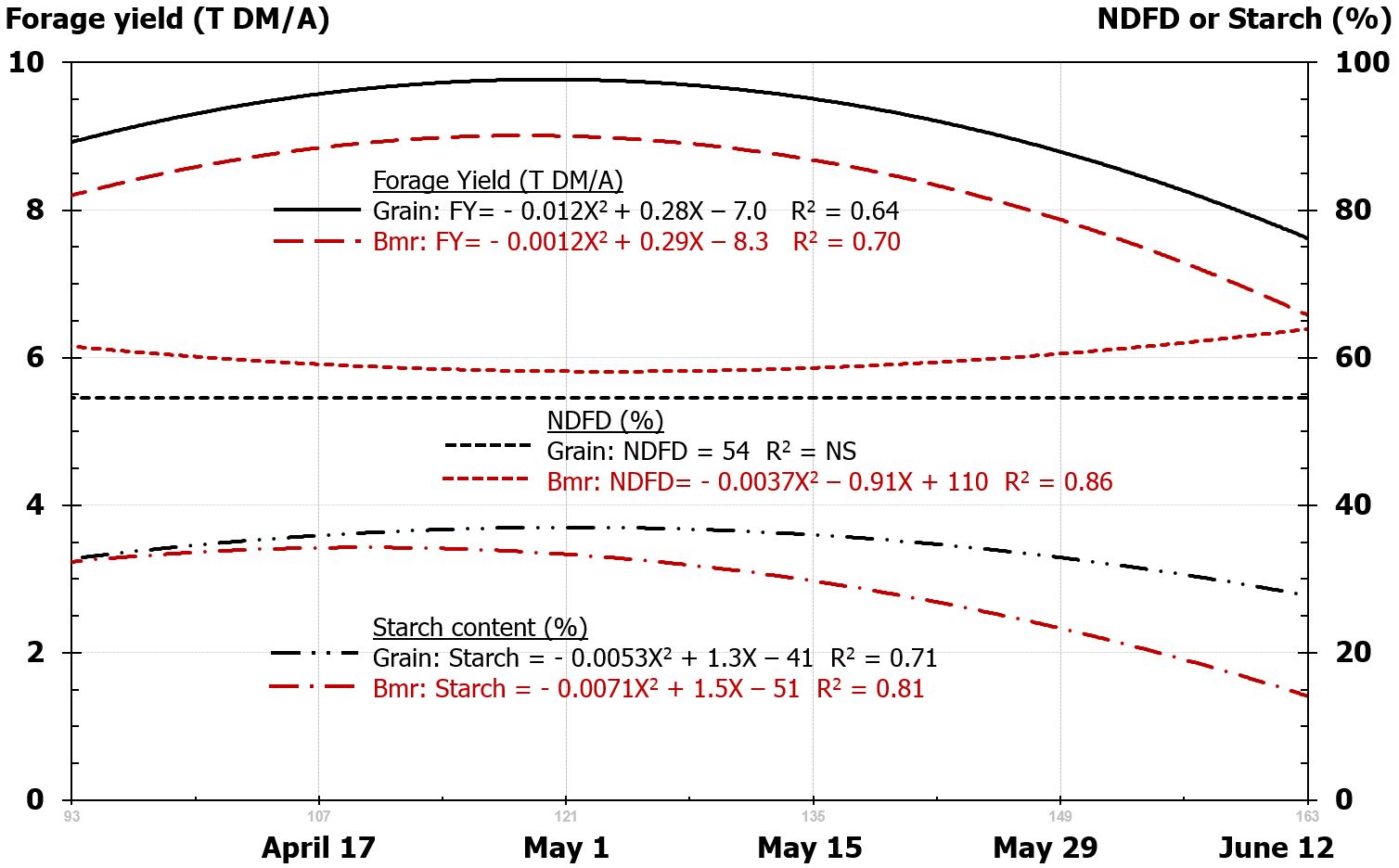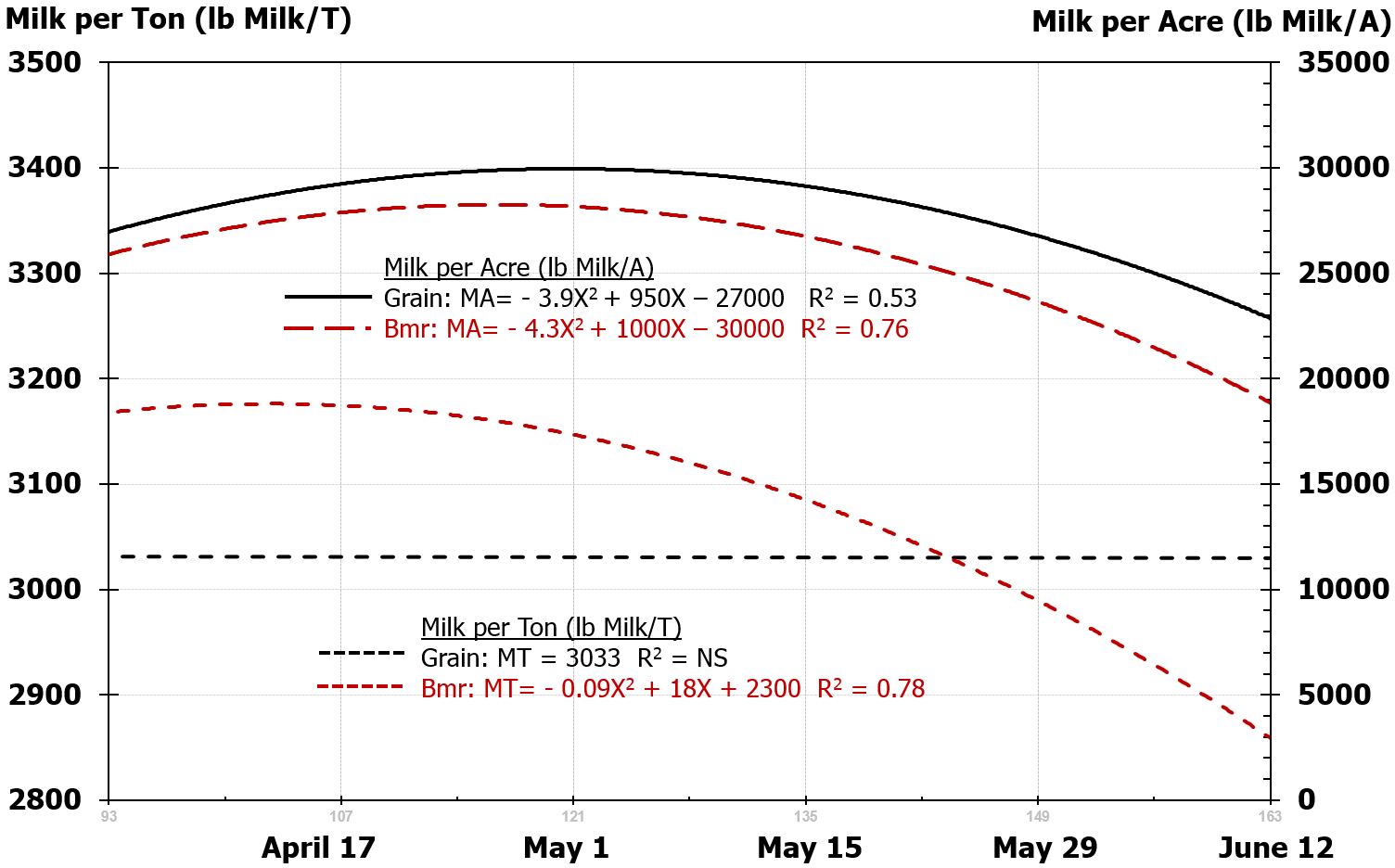
| June 7, 2013 |
Field Crops 28.5 - 112
|
| |
|
Can Corn Silage Energy Pools be Manipulated Using Brown Midrib Technology?
Joe Lauer, Corn Agronomist
The energy in corn silage comes from two energy pools: NDFD and Starch. The NDFD energy pool is derived from stover which consists of the stalk, leaves, tassel, cob, ear shank and husk on the corn plant. The starch energy pool consists of the grain endosperm. These energy pools can be manipulated by hybrid selection and management. The management issue of the 2013 growing season has been planting date. Some farmers are wondering if planting a bmr hybrid late would help with the stover energy pool.
From 2009 to 2012 in our planting date studies we compared silage yield and quality of full-season grain and brown midrib hybrids at five planting dates in each year.
The forage yield of a full-season grain hybrid was always higher than the forage yield of a brown midrib hybrid (Figure 1). However, the NDFD content of a brown midrib hybrid was always higher than the NDFD content of a grain hybrid. Starch content of both types of hybrids was similar when planted early, however, the starch content of brown midrib hybrids was lower with later planting dates.
Figure 1. Corn forage yield, ivNDFD and starch content response of full-season grain and brown midrib hybrids (104-108 d RM) to planting date during 2009 to 2012 at Arlington, WI (N= 160 plots).

During these years Milk per Ton was not affected by planting date for full-season hybrids (Figure 2 in http://wisccorn.blogspot.com/2013/05/B037.html), Milk per Ton decreased with later planting date. For brown midrib hybrids, Milk per Ton was best when planted early, but decreased as planting was delayed. The full-season grain hybrid always produced more Milk per Acre than the full-season brown midrib hybrid even though the energy in the NDFD pool was always greater. The difference is made up by the energy in the starch pool of a grain hybrid.
Figure 2. Corn forage milk per ton and milk per acre response of full-season grain and brown midrib hybrids (104-108 d RM) to planting date during 2009 to 2012 at Arlington, WI (N= 160plots).

The details of these studies can be found at http://corn.agronomy.wisc.edu/Research/Default.aspx.